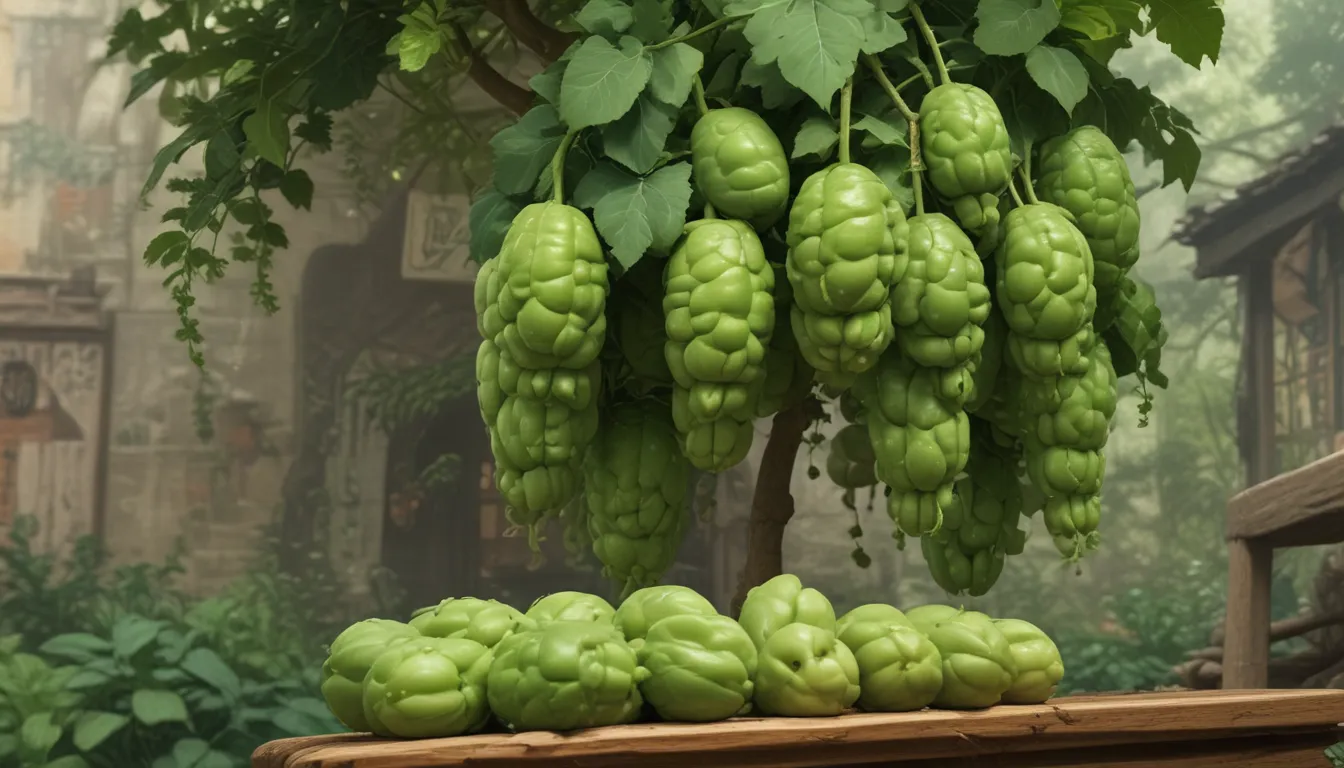Ultimate Guide to Growing Cucamelons: Your Go-To Resource for Mexican Sour Gherkins

Are you a garden enthusiast looking to cultivate unique and exciting crops this year? Have you ever considered growing cucamelons, also known as Mexican sour gherkins, mouse melons, or sour cucumbers? If not, you’re in for a treat! These grape-sized members of the gourd family are both fascinating and delicious to grow.
In this comprehensive guide, we’ll walk you through everything you need to know about planting, growing, and caring for cucamelons. From cultivation and history to propagation, harvesting, preserving, and even tasty recipes, we’ve got you covered. Let’s dive in and explore the wonderful world of cucamelons!
What You’ll Learn
Here’s a breakdown of what you can expect to learn in this guide:
- What Are Cucamelons?
- Cultivation and History
- Propagation
- How to Grow
- Growing Tips
- Where to Buy
- Managing Pests and Disease
- Harvesting
- Preserving
- Recipes and Cooking Ideas
- Quick Reference Growing Guide
Now, let’s start by exploring what exactly cucamelons are and why they are such a unique addition to your garden.
What Are Cucamelons?
Cucamelons, scientifically known as Melothria scabra, are a fascinating species belonging to the Melothria genus within the Cucurbitaceae family. Native to the Americas, specifically Central America, these tiny grape-sized fruits bear a striking resemblance to miniature watermelons in appearance.
The key features of cucamelons include their green and white striped pattern, similar to a watermelon, and their crisp white flesh with teardrop-shaped seeds inside. The flavor of cucamelons is often likened to cucumbers with a hint of tanginess, reminiscent of lime.
One crucial distinction to make when growing cucamelons is to ensure you are dealing with M. scabra and not similar species like M. pendula or M. charantia, which turn toxic as they mature and ripen. Always confirm the species before consumption to avoid any harmful effects.
Anatomy
Cucamelon plants feature long, fuzzy vines and leaves akin to cucumbers, with tendrils that aid in climbing and clinging to structures for support. The blooms of cucamelon plants are yellow and five-petaled, with female blossoms opening first, unlike most Cucurbitaceae species.
In their natural habitat, cucamelons thrive in forested areas or along margins with loamy soil preferences. Despite their petite size, these vines can reach lengths of 10-12 feet or more, requiring support to grow and produce fruits.
Cultivation and History
Cucurbit crops have a rich history of over 11,000 years in cultivation, with the Aztec people and other indigenous groups in Central America passing down valuable crops like the Mexican sour gherkin. Referred to as “sandita” or “mouse melon,” cucamelons have been a cherished food source for centuries in the region.
The mid-1800s marked the first known written record of cucamelons by French botanist Charles Victor Naudin, with subsequent naming by renowned botanist Carl Linnaeus. The term “cucamelon” itself emerged in the mid-1980s, further popularizing these delightful fruits.
Indigenous communities have historically used cucamelons in various culinary applications, including salads, stir-fries, and pickling. Today, cucamelons continue to be enjoyed for their sweet and mild flavor, making them a favorite among home gardeners.
When it comes to cultivation, cucamelons thrive in USDA Hardiness Zones 2-11, with some regions necessitating winter protection from Zone 7 onwards. Whether grown as perennials or annuals, cucamelons offer a unique and rewarding experience for gardeners.
Propagation of Cucamelon Plants
When it comes to propagating cucamelons, direct sowing outdoors is recommended for optimal results. Wait until the danger of frost has passed and nighttime temperatures are at least 40°F before planting cucamelon seeds.
Select a site with rich, loamy soil and full sun exposure, ensuring ample space for the vines to climb and sprawl. While it’s not advisable to start seeds indoors due to their delicate nature, outdoor sowing in early to mid-spring can yield successful germination.
From Seed
For seed sowing, roughen the soil at the planting site, sow seeds about a quarter to a half-inch deep in mounds at 24-inch intervals, and ensure consistent moisture for germination. Utilizing dome covers or cloches can create a protective microclimate for seedlings and promote healthy growth.
Once seedlings emerge, provide sturdy support structures for the vines to climb on, aiding in their growth and fruit production. Alternatively, transplanting starter plants, if available, into prepared soil or containers can kickstart your cucamelon garden.
How to Grow Mexican Sour Gherkins
Growing cucamelons successfully involves providing full sun exposure, rich loamy soil, and structural support for climbing vines. From watering and fertilizing to pruning and harvesting, maintaining healthy cucamelon plants ensures a bountiful harvest.
To thrive, cucamelons require about 1 inch of water per week, with superior heat tolerance in warmer regions. Pruning back to ground level in the fall or lifting tubers for storage in colder regions can help protect and rejuvenate cucamelon plants for subsequent seasons.
Container gardening is also a viable option for growing cucamelons, allowing flexibility in small-space gardens or patios. By following these essential tips and practices, you can enjoy a flourishing cucamelon harvest in your garden.
Managing Pests and Disease
While cucamelons are generally robust and pest-resistant, occasional threats from aphids, slugs, and diseases like cucumber mosaic virus and powdery mildew may require vigilant monitoring and preventive measures. Adequate pest control and disease management practices can safeguard your cucamelon crop and ensure a healthy garden ecosystem.
By staying informed about common pests and diseases that may affect cucamelons, you can proactively address any issues and maintain thriving plants throughout the growing season.
Harvesting Cucamelon Fruit
Harvesting cucamelons is a straightforward and enjoyable process, with continuous fruit setting throughout the summer months. Regular monitoring and timely picking of ripe fruits ensure optimal flavor and quality for consumption.
When harvesting cucamelons, be attentive to fruit size and color changes, indicating readiness for picking. Employ proper techniques like snipping or twisting ripe cucamelons off the vine to prevent damage and ensure a successful harvest.
By following these guidelines, you can enjoy a steady supply of fresh cucamelons and collect seeds for future plantings, enhancing your gardening experience and culinary adventures.
Preserving Mexican Sour Gherkins
Preserving cucamelons through pickling is a popular and practical method for extending their shelf life and enhancing their flavor profile. With simple brining and canning techniques, you can create delectable pickled cucamelons to savor throughout the year.
By rinsing, drying, and canning fresh cucamelons with vinegar, salt, and spices, you can produce flavorful pickles ideal for various culinary applications. Discover the art of pickling cucamelons and elevate your gastronomic repertoire with homemade delicacies.
Recipes and Cooking Ideas
In addition to pickling, cucamelons can be used in diverse culinary creations, such as salads, stir-fries, sautés, and relishes. Whether enjoyed raw or cooked, cucamelons offer a versatile and refreshing addition to your dishes, enhancing color, texture, and flavor profiles.
Explore innovative recipes like grilled cucamelons, cucumber bruschetta, and tangy cucumber salads to elevate your culinary endeavors and delight your taste buds. With cucamelons at your disposal, the possibilities for culinary creativity are endless.
Quick Reference Growing Guide
To simplify your cucamelon cultivation journey, refer to this quick reference guide with essential information on plant type, water needs, hardiness, exposure, spacing, height, and common pests and diseases. By following these guidelines, you can cultivate healthy cucamelons and achieve a successful harvest in your garden.
Wrap Up
Are you ready to embark on a cucamelon growing adventure in your garden? By following the expert guidance and tips provided in this comprehensive guide, you can cultivate thriving cucamelon plants and enjoy a bountiful harvest of Mexican sour gherkins. From propagation to preservation, cucamelons offer a rewarding and flavorful experience for gardeners of all levels.
If you’re eager to explore more cucurbit crops or expand your gardening repertoire, consider exploring additional guides on golden zucchini, pumpkins, and zucchini for further inspiration. Remember, gardening is a joyful journey of discovery and growth, and cucamelons are a delightful addition to any garden. Happy growing and happy harvesting!
With a focus on education, detailed explanations, and practical advice, this rewritten article aims to provide readers with a valuable and enriching resource on cultivating cucamelons. By incorporating conversational tones, bulleted lists, and markdown formatting, the content is presented in an engaging and reader-friendly manner. By expanding on the original text’s information and structure, this revised article offers a comprehensive guide to growing Mexican sour gherkins for gardening enthusiasts.





